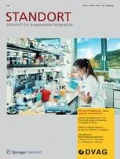Zusammenfassung
Der Artikel beleuchtet jüngste Phänomene der touristischen Inszenierung der kubanischen Revolution, eingebettet in die Eigenheiten Kubas und seine voranschreitende Etablierung als internationale Urlaubsdestination. Dabei wird aufgezeigt, wie, durch wen und auf Basis welcher Motive diese Inszenierung vollzogen wird. Zudem werden Chancen und Risiken der Inszenierung herausgearbeitet.
Die Öffnung Kubas für den internationalen Tourismus Mitte der 1990er-Jahre zur Generierung von Devisen war eine Reaktion auf ausbleibende Wirtschaftshilfen seitens der zerfallenen UdSSR und des RGW. Von Fidel Castro als „notwendiges Übel“ bezeichnet, stellt der Tourismus heute eine der wichtigsten Einnahmequellen für den kubanischen Staat und seine Bevölkerung dar.
Um die angenommenen Erwartungen der internationalen Touristen zu erfüllen – revolutionäre Symboliken und Persönlichkeiten wie Che Guevara sowie von Kolonialarchitektur, Zerfall und Oldtimern geprägte Städte – inszenieren viele kubanische Akteure im Tourismus eben diese Symbole, Narrative und Praktiken. Es wird argumentiert, dass hiermit sowohl bewusst, als auch unbewusst zur Konstruktion einer distinktiven Place Brand beigetragen wird. Während die bewusste Dimension der Markenbildung in der absichtsvollen Reproduktion bestimmter Narrative mit dem Ziel der Erwartungserfüllung liegt, haben die handelnden Akteure selten ein umfassendes Verständnis für ihren Einfluss auf die Markenbildung bei den Touristen als Rezipienten der Narrative.
Abstract
This paper focuses on recent phenomena of touristic staging of the Cuban revolution, embedded in the peculiar situation of Cuba and its progressive establishment as an international tourist destination. It is shown how, by whom and for what reasons this staging occurs. Furthermore, opportunities and risks of this staging will be highlighted.
The opening for international tourism during the 1990s aimed at attracting forex to Cuba, as after the decay of the USSR and the COMECON economic aid broke off. Today tourism, described as a “necessary evil” by Fidel Castro, is one of the most important sources of income for both, the Cuban state and its population.
To fulfill the expectations of international tourists, which mainly consist of revolutionary symbols and personalities like Che Guevara on the one hand as well as colonial architecture falling to ruins and classic American cars on the other, many actors in Cuban tourism stage these symbols, narratives and practices. By doing so, they contribute to the creation of a distinctive place brand, both intentionally and unintentionally. The intentional dimension of this process aims at fulfilling the expectations of tourists by reproducing certain narratives. At the same time, the actors involved often have limited understanding for their impact on branding processes among tourists.




Literatur
Anholt S (2010) Places: identity, image and reputation. Palgrave Macmillan, London
Avraham E, Ketter E (2008) Will we be safe there? Analysing strategies for altering unsafe place images. Place Brand 4(3):196–204
Cohen E (1988) Authenticity and commoditization in tourism. Ann Tour Res 15(3):371–386
Colantonio A, Potter R (2006) Urban tourism and development in the socialist state. Havana during the ‘special period’. Ashgate, Aldershot
Dolores Espino M (2014) Tourism in socialist Cuba. In: Gayle DJ, Goodrich JN (Hrsg) Tourism marketing and management in the caribbean. Routledge, London, S 99–110
Doswell R (2000) The management of the tourism sector. London, Columbus
Esch F‑R (2010) Strategie und Technik der Markenführung, 6. Aufl. Vahlen, München
Felipe K (2017) Holguín, der deutsche Tourist und die Rundreisen. In: Granma Internacional, Deutsche Ausgabe, März 2017, 8–9
Freire JR (2007) ‘Local People’ a critical dimension for place brands. J Brand Manag 16(7):420–438
Greenwood D (1977) Culture by the pound. An anthropological perspective on tourism as cultural commoditization. In: Smith VL (Hrsg) Hosts and guests: the anthropology of tourism. University of Pennsylvania Press, Philadelphia, S 129–138
Hankinson G (2004) Relational network brands: towards a conceptual model of place brands. J Vacat Mark 10(2):109–121
Jatar-Hausmann A (1999) The Cuban way: capitalism, communism, and confrontation. Kumarian Press, West Hartford
Kavaratzis M (2009) Cities and their brands: lessons from corporate branding. Place Brand 5(1):26–37
Kotler P (1999) Marketing places Europe. How to attract investments, industries, residents and visitors to cities, communities, regions and nations in Europe. Financial Times Prentice Hall, London
Kotler P, Gertner D (2002) Country as brand, product, and beyond: a place marketing and brand management perspective. J Brand Manag 9(4/5):249–261
Kräußlich B, Schürholz P, Völkening N (2015) Place Branding zur zielgerichteten Kommunikation von räumlichen Images. In: Fiener P et al (Hrsg) Facetten der Standortentwicklung. Beispiele aus Tennessee/USA. Geographica Augustana, Bd. 18. Institut für Geographie, Augsburg, S 89–104
Leogrande WM (2015) Cuba’s perilous political transition to the Post-Castro era. J Lat Am Stud 47(02):377–405
Moilanen T, Rainisto SK (2009) How to brand nations, cities and destinations. A planning book for place branding. Palgrave Macmillan, New York, Basingstoke
Morgan N, Pritchard A, Pride R (2010) Destination branding. Creating the unique destination proposition, 2. Aufl. Butterworth-Heinemann, Amsterdam
Nau S (2016) Kubas Gesellschaft im Wandel der Zeit. Geogr Rundsch 68(10):12–18
Nunez T, Lett J (1989) Touristic studies in anthropological perspective. In: Smith VL (Hrsg) Hosts and guests: the anthropology of tourism. University of Pennsylvania Press, Philadelphia, S 265–274
Ritzer G (1996) The MCDonaldization of society. Pine Forge Press, Thousand Oaks
Roland LK (2010) Tourism and the commodification of Cubanidad. Tour Stud 10(1):3–18
Scharf A, Schubert B, Hehn P (2012) Marketing. Einführung in Theorie und Praxis, 5. Aufl. Schäffer-Poeschel, Stuttgart
Uriarte M (2002) Cuba social party at the crossroads: Maintaining Priorities, Transforming Practice. In: Gastón Institute Publications. Paper 115. Oxfam America, Boston
Watkins S, Hassanien A, Dale C (2006) Exploring the image of the black country as a tourist destination. Place Brand 2(4):321–333
Winfield-Pfefferkorn J (2005) The Branding of Cities. Exploring City Branding and the Importance of Brand Image. Syracuse
The World Bank (2017) International tourism, number of arrivals. Data. https://data.worldbank.org/indicator/st.int.arvl. Zugegriffen: 10. Juli 2017
Zeuske M (2010) Traditionen, Gegenwart und Zukunft der kubanischen Revolution. In: Bundeszentrale für politische Bildung (Hrsg) Revolutionen in Lateinamerika. Bundeszentrale für politische Bildung, Bonn, S 25–31
Author information
Authors and Affiliations
Corresponding author
Rights and permissions
About this article
Cite this article
Völkening, N. (Un-)bewusste Markenbildung im Tourismus?. Standort 41, 293–299 (2017). https://doi.org/10.1007/s00548-017-0507-8
Published:
Issue Date:
DOI: https://doi.org/10.1007/s00548-017-0507-8
Schlüsselwörter
- Markenbildung
- Tourismus
- Kuba
- Inszenierung
- Kontrollierte Kommunikation
- Unkontrollierte Kommunikation
- Stakeholder

